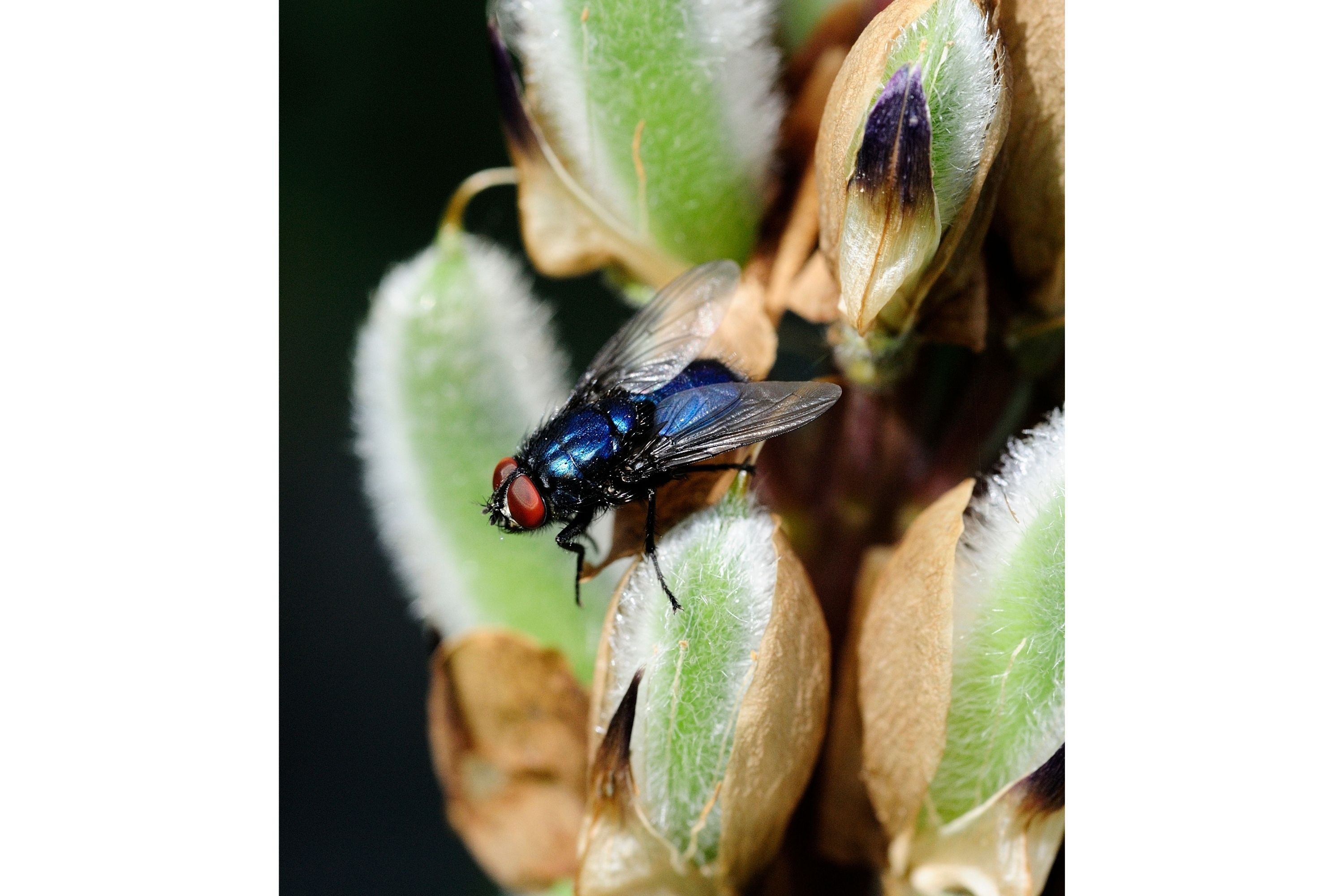Blue bottle fly
(Calliphora vomitoria)

Description
Calliphora vomitoria, known as the blue bottle fly, orange-bearded blue bottle, or bottlebee is a species of blow fly, a species in the family Calliphoridae. Calliphora vomitoria is the type species of the genus Calliphora. It is common throughout many continents including Europe, Americas, and Africa. They are fairly large flies, nearly twice the size of the housefly. They can be easily identified by their shiny, blue bodies. While adult flies feed on nectar, females deposit their eggs on rotting corpses, making them important forensic insects, as their eggs and timing of oviposition can be used to estimate time of death. Blue bottle flies are typically 10–14 mm (3⁄8–9⁄16 in) long, almost twice the size of a housefly. The head and thorax are dull gray, and the back of the head has long yellow-orange setae. The abdomen is bright metallic blue with black markings. Its body and legs are covered with black bristly hairs. It has short, clubbed antennae and four tarsi per leg. The eyes are red and the wings are transparent. The legs and antennae are black and pink. The chest is bright purple and has spikes for protection from other flies. To differentiate C. vomitoria from other closely related species such as Calliphora vicina, C. vomitoria can be identified by characteristic "orange cheeks", which are the orange hairs below the eyes. Additionally, C. vomitoria has a dark basicosta (base of the wing) while C. vicina has a yellow basicosta. All these characteristics can be identified through a simple photograph. Calliphora vomitoria can be found throughout the world, including most of Europe, Alaska, Greenland, the south of Mexico, United States, and southern Africa. It prefers higher elevations relative to other Calliphoridae species, such as Lucilia sericata and Chrysomya albiceps. They are among the most abundant flies found in these regions. Temperature has a significant effect on distribution. As is the case with most flies, C. vomitoria are found most abundantly during spring and summer, and least abundant during fall and winter. The preferred habitat of C. vomitoria varies depending on the season. During winter and summer, they can be found mostly in rural areas (and riparian areas to a lesser extent). During spring and fall, they are found in riparian areas.
Taxonomic tree:







